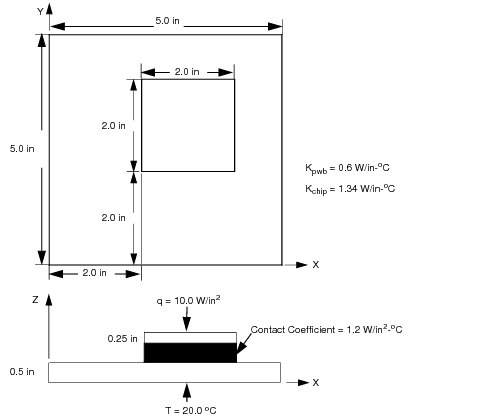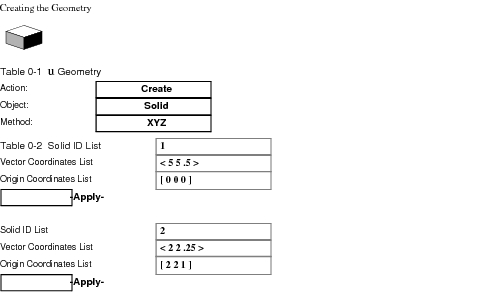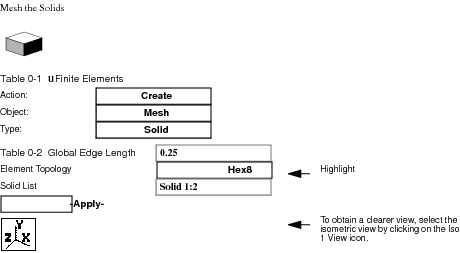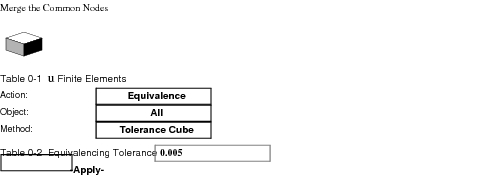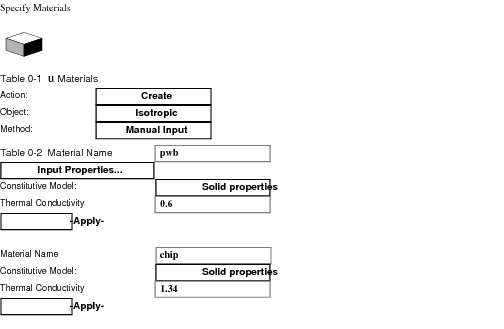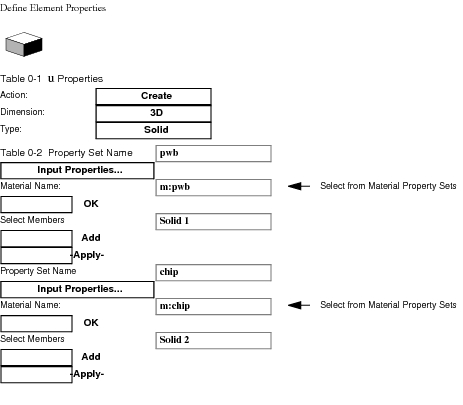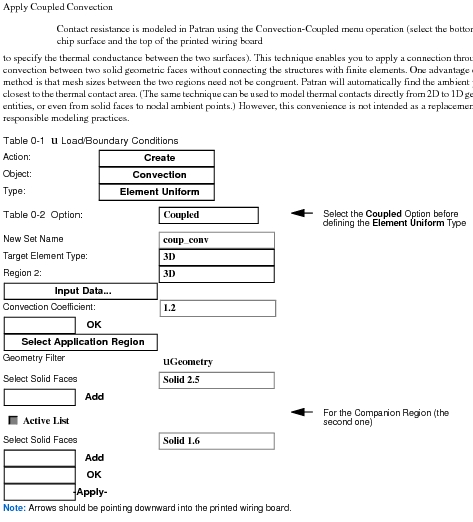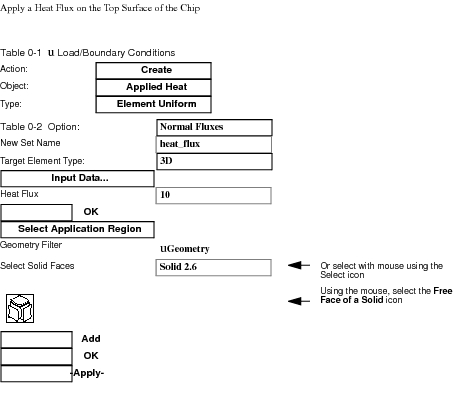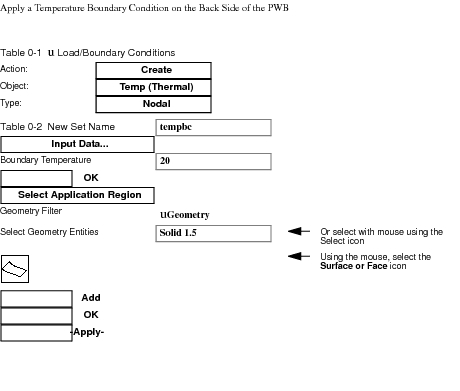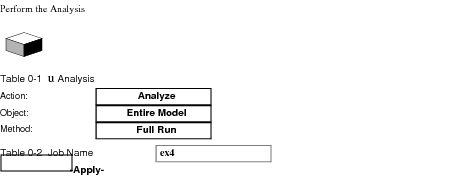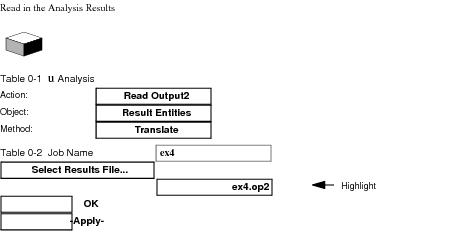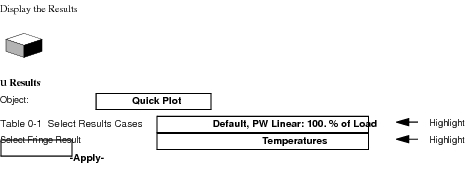XXXXXXXXXXXXXXXXXXXXXXXXXXXXXXXXXXXXXXXXXXXXXXXXXXXXXXXXXXXXXXXXXXXXXXXXXXXXXXXXXXXXXXXXXXXXXXXXXXXXXXXXXXXXXXXXXXXXXXXXXXXXXXXXXXXXXXXXXXXXXXXXXXXXXXXX''"> 7.5 Example 4 - Thermal Contact Resistance
Problem Description
The dimension of the chip is 2 x 2 inches with a thickness of 0.25 inches. The printed wiring board is 5 x 5 inches with a thickness of 0.5 inches.
Thermal conductivity properties for the chip and wiring board are, respectively, 1.34 and 0.6 W/in-oC.
A heat flux of 10 W/in2 is imposed on the top of the chip component. A thermal conductance value of 1.2 W/in2-oC is applied between the chip and the printed wiring board. The bottom of the printed wiring board is held at a constant temperature of 20 oC.
Modeling
In this example we will model the contact resistance between two solids--in this case, the contact between an electronic component and a printed wiring board (PWB)--to determine the maximum temperature at the top of the chip and the temperature drop to the bottom of the wiring board.
Discussion of Results
Due to the simple geometry, a hand calculation can be performed to provide an estimate of the maximum temperature at the chip surface:
Layer Resistance ≅ Thickness / ( K * A cross section)
Contact Resistance ≅ 1 / ( h * A contact)
Material | Thermal Resistance (C/Watt) |
Chip | 0.046642 |
Thermal Contact | 0.208333 |
PWB (5x5) | 0.03333 |
PWB (2x2) | 0.208333 |
Total Resistance | 0.2883 < R < 0.4633 |
For a total heat load of 40 W, the maximum temperature can be estimated as:
Q = ΔT / Total Resistance
Then, Tmax = 20.0 + 40.0 * (Total Resistance)
or 31.53 oC < Tmax < 38.53 oC
The finite element calculation determined the maximum temperature as 36.51 oC, which is rational considering the hand calculation and the approximation inherent in that solution.
